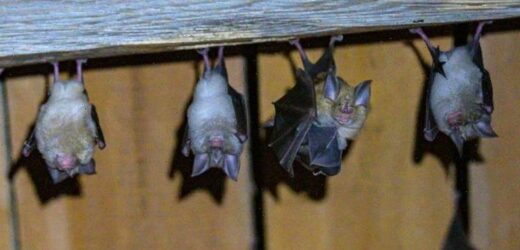US intelligence agencies looking into data from Wuhan lab
We use your sign-up to provide content in ways you’ve consented to and to improve our understanding of you. This may include adverts from us and 3rd parties based on our understanding. You can unsubscribe at any time. More info
New reports have found they were carrying the closest known relatives to SARS-CoV-2 – the virus responsible for causing COVID-19. Researchers from the Pasteur Institute in France and the University of Laos took 645 bats from limestone caves in northern Laos and screened them for viruses related to SARS-CoV-2. They found three viruses – which they coined BANAL-52, BANAL-103 and BANAL-236 – that infected horseshoe bats and shared more than 95 percent of their overall genome with SARS-CoV-2.
They found that BANAL-52 was 96.8 percent identical to SARS-CoV-2, Nature News has reported.
This makes the virus more genetically similar to SARS-CoV-2 than any other known virus.
Previously, the closest relative to SARS-CoV-2 was RaTG13, which was found in horseshoe bats in 2013 and shares 96.1 percent of its genome with SARS-CoV-2.
All of the three of the newly discovered viruses were found to be more similar to SARS-CoV-2 in a key part of their genome, the receptor-binding domain (RBD), than any other virus.


The RBD is the part of the virus that allows it to bind to host cells.
In SARS-CoV-2, the RBD binds to the ACE2 receptor in human cells, and the receptor is used by the virus as a gateway into cells.
The new study also found that BANAL-52, BANAL-103 and BANAL-236 can bind to ACE2 and use it to enter human cells.
The researchers said that other candidates proposed as ancestors of SARS-CoV-2 found in bats, including RaTG13, cannot do this.
They have said that the three newly found viruses could bind to ACE2 as well as early strains of SARS-CoV-2 found in Wuhan.
The new findings add to existing evidence that SARS-CoV-2 is more likely to have a natural origin, rather than originating in a Wuhan lab, as has previously been suggested.

The researchers wrote in their paper, that is yet to be peer-reviewed, that “sequences very close to those of the early strains of SARS-CoV-2 exist in nature”.
Edward Holmes, an evolutionary biologist at the University of Sydney, who wasn’t involved in the research, told Bloomberg “The receptor-binding domain of SARS-CoV-2 looked unusual when it was first discovered because there were so few viruses to compare it to.
“Now that we are sampling more from nature, we are starting to find these closely related bits of gene sequence.”
The authors of the paper said their findings support the hypothesis that SARS-CoV-2 resulted from a recombination of viral sequences that exist in horseshoe bats.
But it also deepens the mystery.
DON’T MISS
Germany faces worse gas crisis as Britain outsmarts Putin [INSIGHT]
UK driver crisis fuels ‘serious shortage’ warning over medical supply [REPORT]
EU considers investing in UK’s Galileo replacement [REVEAL]


While the newly found viruses are closely related to SARS-CoV-2, they lack a sequence for the “furin cleavage site,” which is seen in SARS-CoV-2 and helps the virus enter into cells.
This means further research is still required to better understand the origins of SARS-CoV-2 to show when the furin site was introduced.
If found to be true, the discovery also raises fears that there are numerous coronaviruses with the potential to infect people.
Answers might come from sampling more bats and other wildlife in southeast Asia, which many groups are doing.
David Robertson, a virologist at the University of Glasgow, UK, calls the find “fascinating, and quite terrifying”.
The findings are currently being considered for publication in a Nature journal.
Source: Read Full Article


